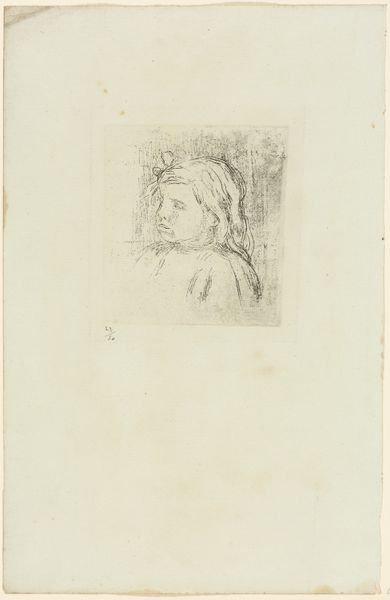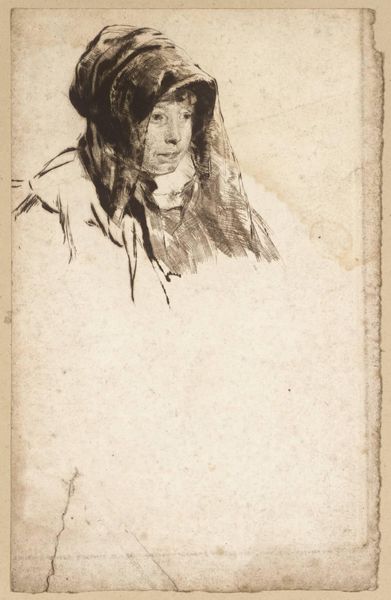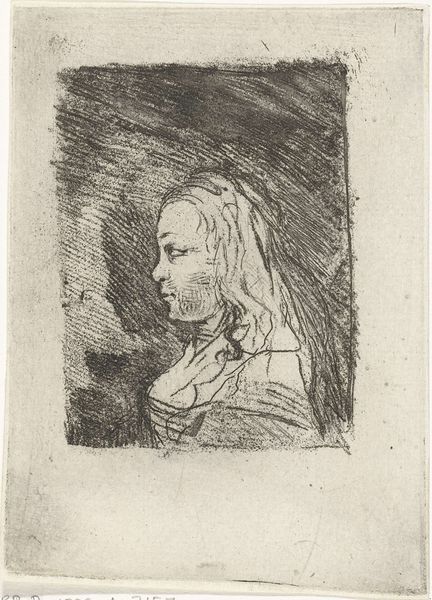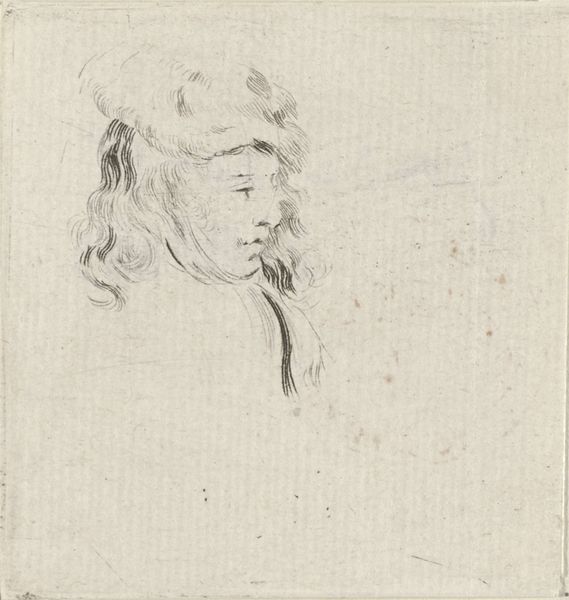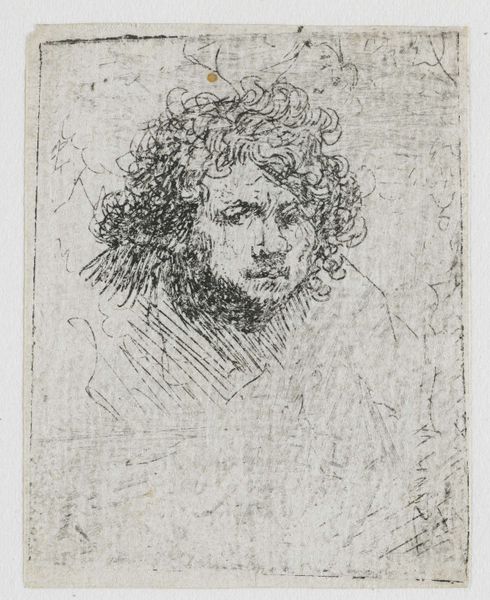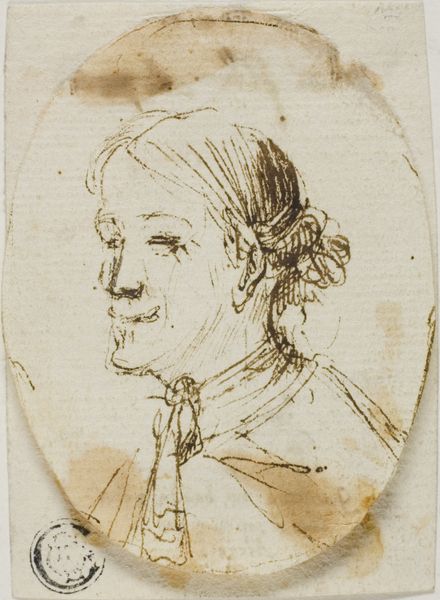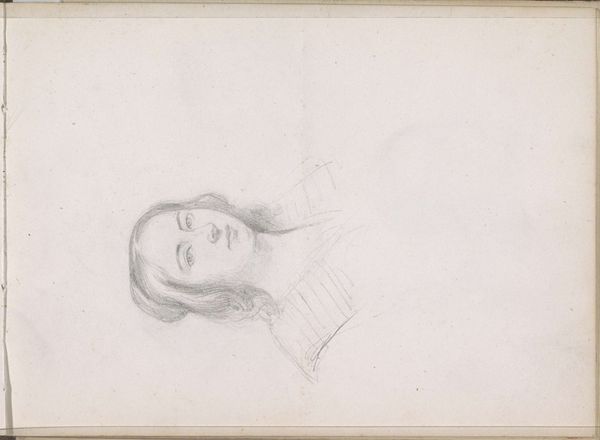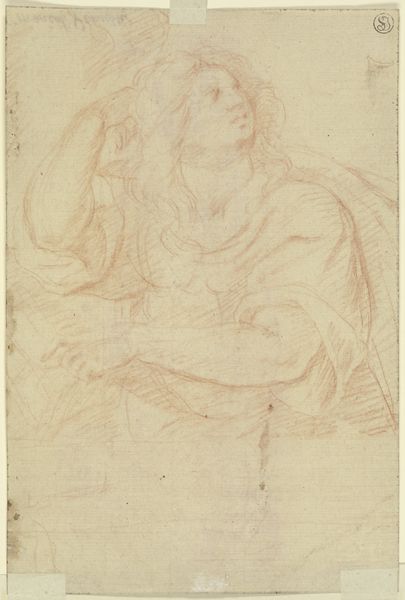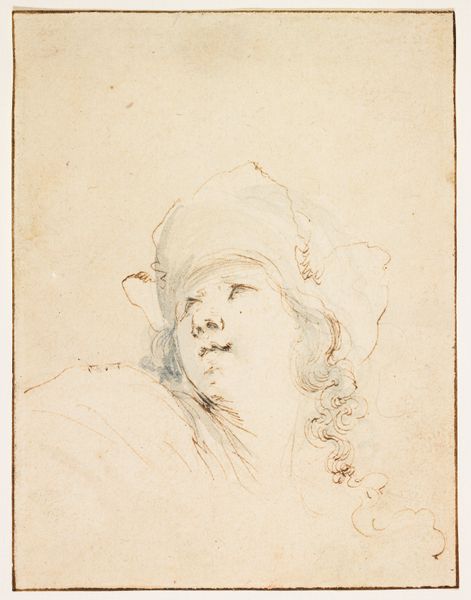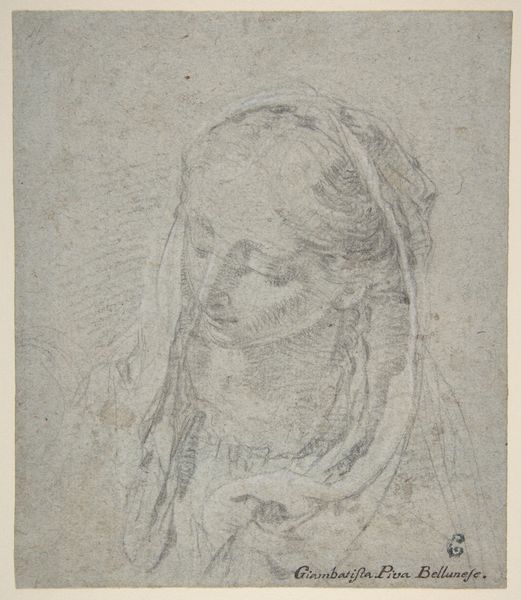
drawing, print, etching, intaglio, paper, graphite, charcoal
#
portrait
#
drawing
#
self-portrait
#
baroque
# print
#
etching
#
intaglio
#
charcoal drawing
#
paper
#
graphite
#
charcoal
#
northern-renaissance
Dimensions: height 64 mm, width 55 mm
Copyright: Rijks Museum: Open Domain
Editor: This is Rembrandt van Rijn’s "Study of the Head of a Woman," created around 1635. It's an etching on paper. It feels so immediate and intimate, almost like catching a private thought. What do you see in this piece, especially as a study of a woman's head? Curator: Indeed. The intimacy stems from Rembrandt's ability to capture a fleeting moment. But let's delve deeper. What cultural symbols can we glean from the style of dress, or perhaps even her expression? Could she represent a specific archetype? The way light and shadow are used, for instance, often conveys meaning that transcends simple representation. This chiaroscuro effect emphasizes certain features, drawing our eyes to those areas laden with potential cultural or emotional significance. Does her averted gaze suggest modesty, perhaps? Or something else entirely? Editor: That’s interesting. I hadn’t really thought about her gaze in a symbolic way. I just thought it was a quick sketch. Curator: It might appear so, but think of it this way: even quick sketches can unconsciously embody the societal expectations of the time. Consider the role of women in 17th century Dutch society and how their depiction in art was often carefully constructed. This ‘modest’ gaze might not be incidental, but instead reflective of how women were perceived and portrayed. And we see this specific gaze mirrored across a wide array of other works from this era. Don't you think this could imply something broader, something collectively held and remembered? Editor: That makes a lot of sense! So even something that looks spontaneous can be embedded with cultural meaning? Curator: Precisely! Rembrandt's genius lies not just in technical skill, but his ability to imbue these "studies" with echoes of his era, preserving them as cultural touchstones. It gives us a new way of observing beyond its artistic virtuosity. Editor: I’ll definitely look at other etchings differently now! Thank you.
Comments
rijksmuseum over 2 years ago
⋮
In 1641 bracht Saskia haar vierde kind ter wereld, een zoon, Titus. De vreugde werd snel getemperd door een slopende aandoening waarmee ze te kampen kreeg, waarschijnlijk tuberculose. Toen ze in 1642 overleed, was ze nog geen 30 jaar oud. Tot het laatst heeft Rembrandt haar geschetst. Vooral in het etsje rechts weet hij haar lege blik treffend te tekenen.
Join the conversation
Join millions of artists and users on Artera today and experience the ultimate creative platform.

